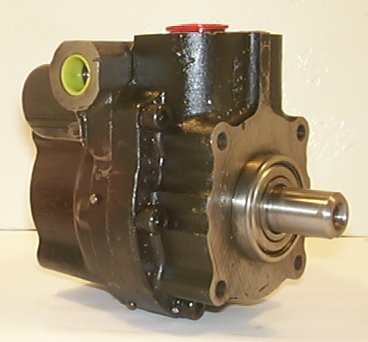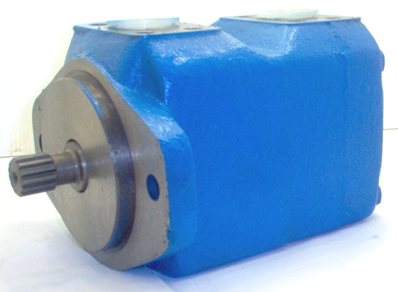Types of Hydraulic Systems
Hydraulic systems utilise fluid mechanics principles to generate, control, and transmit energy. Different types of hydraulic systems cater to specific requirements and applications. These include open-loop hydraulic systems, closed-loop hydraulic systems, continuously variable transmission (CVT) systems, and regenerative hydraulic systems. Each type has its unique characteristics and is suitable for different tasks. Understanding their functionalities is essential for optimising performance and efficiency in hydraulic applications.
Components of Hydraulic Systems
Hydraulic Pumps
.jpg)
Hydraulic pumps are essential, as they generate the necessary fluid flow and pressure to operate various machinery and control mechanisms. A hydraulic pump converts mechanical energy into hydraulic energy by creating pressurised fluid flow.
These pumps find applications in various industries, including construction, manufacturing, agriculture, aerospace, automotive, and more. They are used in cranes, forklifts, excavators, power tools, lifts, presses, vehicle steering systems, hydraulic brakes, and transmissions.
The key role of hydraulic pumps is to provide the required force and motion to drive cylinders or motors within the system. They are vital in controlling speed and enabling precise movements in heavy machinery.
Hydraulic Motors

Hydraulic motors are devices that convert hydraulic energy into mechanical energy. They utilise the system pressure and fluid flow to generate rotational motion, allowing them to power various types of machinery.
Hydraulic motors have extensive applications in construction, agriculture, mining, marine, and manufacturing industries. They are commonly used in excavators, cranes, bulldozers, conveyor belts, winches, agricultural machinery, and drilling rigs.
The versatility and efficiency of hydraulic motors make them ideal for applications requiring high torque or precise control over speed. They can operate at low speeds and still deliver significant power output at varying load levels. This flexibility makes them suitable for heavy-duty tasks such as lifting heavy objects or driving large vehicles with precision.
Hydraulic Cylinders

Hydraulic cylinders are mechanical devices that generate linear force and motion using the power of hydraulic fluid. They consist of a cylindrical barrel, a piston, and a rod, all working together to convert fluid pressure into sizable mechanical force.
Hydraulic cylinders have widespread applications in construction, manufacturing, aerospace, automotive, agriculture, and more industries. They can be found in equipment like cranes, excavators, loaders, presses, forklifts, agricultural machinery, hydraulic brakes, and vehicle clutches.
Their primary function is to move or control objects with significant force. They are used for tasks like lifting heavy loads vertically or horizontally and providing smooth movement for various mechanisms within machines. The ability to exert substantial pushing or pulling forces makes them crucial components in heavy-duty applications requiring precise control.
Hydraulic cylinders offer advantages such as compact size and reliability under high loads and pressures while requiring minimal maintenance. Their versatility allows them to be customised based on stroke length requirements.
Types of Hydraulic Systems
Open-loop hydraulic systems are the most common type of hydraulic system. They use a pump to generate fluid flow and pressure directed to an actuator or motor. Once the fluid has performed its function, it is released from the system without being redirected back to the pump. This system lacks feedback control and typically operates at a constant flow rate.
Closed-loop hydraulic systems are designed for applications requiring precise force or velocity control. These systems incorporate a feedback mechanism using sensors and control valves to monitor and adjust fluid flow based on real-time conditions. Unlike open-loop systems, closed-loop systems recycle fluid by redirecting it back to the pump after use. This enables more efficient usage and greater control over motion and speed.
Continuously variable transmission hydraulic systems employ a unique design that allows for smooth variation in output speed without discrete gear shifts. These types of hydraulic systems use specialised pumps and motors with variable displacements or swash plates. By continuously varying their displacement settings, they enable seamless adjustments in output speed ratios based on load demands.
Regenerative hydraulic systems integrate additional components, such as accumulators, into the hydraulic circuitry. Accumulators store excess kinetic energy generated during the deceleration phase and reuse it during the acceleration phase to reduce power consumption from external sources. These systems improve overall efficiency by recovering energy that would have been wasted through heat dissipation.
Find the Hydraulic System Parts and Components You Need
Whether you require pumps, motors, cylinders, valves, or any other component, find what you need at White House Products, Ltd. Our experienced team is dedicated to finding the perfect solution for your specific requirements. With our extensive inventory and expertise in hydraulics, we can help you find the right parts to ensure optimal performance and efficiency of your hydraulic systems. Browse our website or contact us today.
Back to blog posts